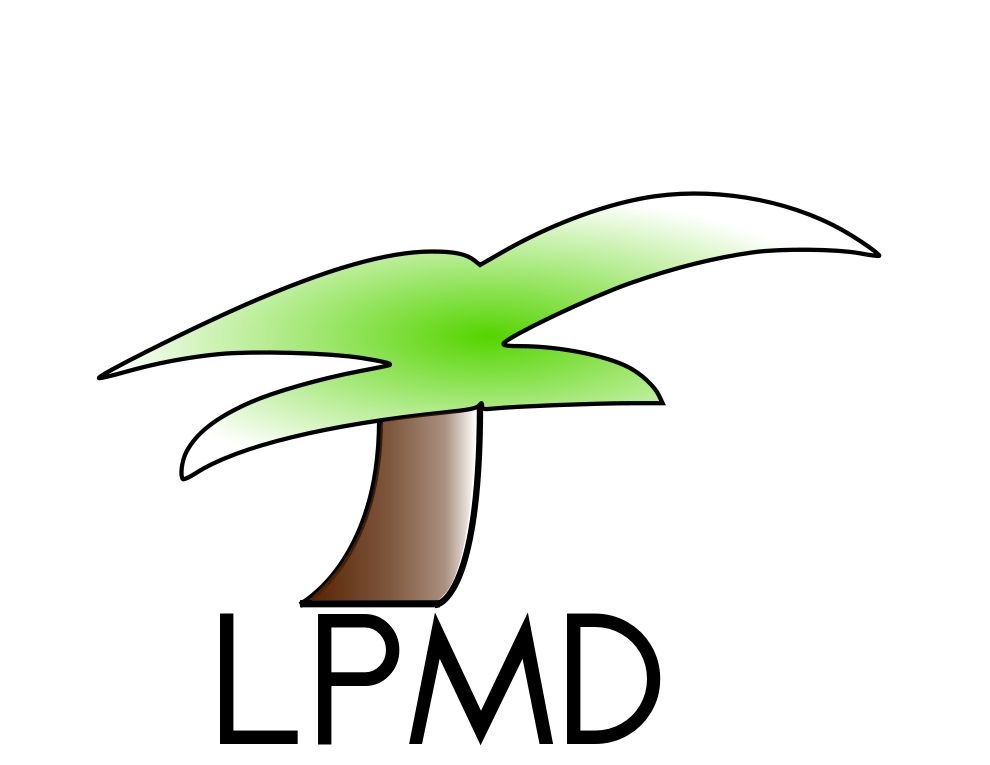Regras de Formatação de Texto
Esta página fornece uma lista mais completa de comandos disponíveis no PmWiki. Observe que é simples criar e editar páginas sem usar qualquer comando de marcação, mas mesmo sem precisar deles eles continuam disponíveis.
Para experimentá-los, tente editar a página WikiSandBox.
Tabela de Conteúdo
- Parágrafos
- Parágrafos Recuados (Citações)
- Listas de Pontos e Numeradas
- Listas de Definição
- Regras de Espaço Branco
- Linha Horizontal
- Ênfase
- Referências
- Títulos
- Seqüência de anulação
- Caracteres Especiais
- Tabelas
Parágrafos
Para criar parágrafos, simplesmente digite o texto. Use uma linha em branco para começar um novo parágrafo.
Palavras em 2 linhas seguidas irão quebrar-se e preencher-se quando necessário (o comportamento normal de XHTML). Para desligar o preenchimento automático, use a diretiva (:quebrasdelinha:) above the paragraph.
- Use
\(single backslash) no fim de uma linha para juntar a linha atual com a próxima. - Use
\\(2 backslashes) at the end of a line to force a line break. - Use
\\\(three backslashes) at the end of a line to force 2 line breaks. - Use
[[<<]]para forçar uma quebra de linha will clear floating elements.
Indented Paragraphs (Quotes)
Flechas (->) no começo de um parágrafo podem ser usadas para produzir um parágrafo indented paragraph. More hyphens at the beginning (--->) produce larger indents.
->Four score and seven years ago our fathers placed upon this continent a new nation, conceived in liberty and dedicated to the proposition that all men are created equal. |
Four score and seven years ago our fathers placed upon this continent a new nation, conceived in liberty and dedicated to the proposition that all men are created equal.
|
Flechas invertidas (-<) no começo de um parágrafo podem ser usadas para produzir um parágrafo com a hanging indent. Adding hyphens at the beginning (---<) causes all the text to indent.
-<Four score and seven years ago our fathers placed upon this continent a new nation, conceived in liberty and dedicated to the proposition that all men are created equal. |
Four score and seven years ago our fathers placed upon this continent a new nation, conceived in liberty and dedicated to the proposition that all men are created equal.
|
--<Four score and seven years ago our fathers placed upon this continent a new nation, conceived in liberty and dedicated to the proposition that all men are created equal. And that food would be good to. |
|
Blocos de texto to which (:linebreaks:) has been applied can be indented by preceding the first line of the block with indention arrows (->) and aligning subsequent lines under the first. An unindented line stops the block indentation. See Cookbook/MarkupTricks for an example.
Bulleted and Numbered Lists
Bullet lists are made by placing asterisks at the left margin. Numbered lists are made by placing number-signs (#) at the left margin. More asterisks/number-signs increases the level of bullet:
* First-level list item ** Second-level list item ### Order this #### E isto (opcional) ### Então isto ** Another second-level item * A first-level item: cooking ## Prepare the experiment ### Unwrap the pop-tart ### Insert the pop-tart into the toaster ## Begin cooking the pop tart ## Stand back |
|
Also see: ListStyles?, Cookbook:OutlineLists and Cookbook:NumberedHeaders
Listas de definição
Listas de definição são feitas colocando virgulas na margem esquerda:
:term:definição do termo ::second-level item: definition of 2nd-level item |
|
Whitespace Rules
Whitespace indentation in lists. Any line that begins with whitespace and aligns with a previous list item (whether bulleted, numbers or definitional) is considered to be "within" that list item. Text folds and wraps as normal, and the directive is honored.
# First-level item\\ Whitespace used to to continue item on a new line # Another first-level item # Whitespace combined with a single # to create a new item one level deeper |
|
Otherwise, linhas que começam com espaço em branco são tratadas como texto pré-formatado, using a monospace font and not generating linebreaks exceto aonde explicitly indicated in the markup. (Another way to create preformatted text blocks is by using the [@...@] markup.)
Linha horizontal
4 ou mais traços (----) no começo de uma linha produzem uma linha horizontal .
Emphasis
- Enclose text in doubled single-quotes (''text''), i.e., two apostrophes, for emphasis (usually italics)
- Enclose text in tripled single-quotes ('''text'''), i.e. three apostrophes, for strong emphasis (usually bold)
- Enclose text in five single-quotes ('''''text'''''), or triples within doubles (five apostrophes), for some other kind of emphasis (usually bold italics)
- Enclose text in doubled at-signs (@@text@@) for
monospacetext - Use [+large+] for large text, [++larger++] for larger, [-small-] for small text, and [--smaller--] for smaller.
- Emphasis podem ser usados multiplas vezes dentro de uma linha, but cannot span across markup line boundaries (ie, you can't put a paragraph break in the middle of bold text).
Other styling
'+big+', '-small-', '^super^', '_sub_',
{+insert or underscore+},
{-delete or strikethrough or strikeout-}
|
big, small, super, sub, insert or underscore,
|
`WikiWordWikiWord neutralisation
See also Wiki Styles? for advanced text formatting options.
Referencias
- Use palavras e frases em duplos colchetes (ex, [[text formatting rules]]) para criar vínculos a outras páginas neste "wiki."
- On some PmWiki installations, capitalized words juntas (ex, WikiWords) can also be used para fazer referencias a outras páginas sem usar os duplos colchetes.
- Precede URLs with "
http:", "ftp:", "gopher:", "mailto:", or "news:" to create links automatically, as in http://www.pmichaud.com/toast. - URLs ending with
.gif,.jpg, or.pngare displayed as images in the page - Links with arbitrary text can be created as either [[target | text]] or [[text -> target]]. Text can be an image URL, in which case the image becomes the link to the remote url or WikiWord.
- Anchor targets within pages (#-links) can be created using
[[#target]].
Cabeçalhos
Headings são feitos colocando um ponto de exclamação (!) at the left margin. mais pontos de exclamação aumentam o nivel de cabeçalho. Por exemplo:
! cabeçalho do Nivel 1 !! Level 2 Heading !!! Level 3 Heading !!!! Level 4 Heading |
cabeçalho do Nivel 1Level 2 HeadingLevel 3 HeadingLevel 4 Heading |
Escape sequence
Anything placed between [= and =] is not interpreted by PmWiki. This makes it possible to turn off special formatting interpretations and neutralise WikiWords that are not links (even easier is to use a tick ` in front, like `WikiWord).
Para blocos de textos pre-formatados, use a marcação [@...@] .
[@ Code goes here like [[PmWiki.PmWiki]] '$CurrentTime $[by] $AuthorLink: [=$ChangeSummary=]'; #just some code @] |
Code goes here like [[PmWiki.PmWiki]] '$CurrentTime $[by] $AuthorLink: [=$ChangeSummary=]'; #just some code |
Também eh util usar [= =] within other wiki structures, as this enables the inclusion of new lines in text values. The example below shows how to include a multi-line value in a hidden form field.
(:input hidden message "[=Line1 Line2=]":)
Special Characters
Tabelas
Tabelas são definidas por células fechadas com '||'. A cell with leading and trailing spaces is centered; a cell with leading spaces is right-aligned; all other cells are left-aligned. An empty cell will cause the previous cell to span multiple columns. (There is currently no mechanism for spanning multiple rows.) A line beginning with '||' specifies the table attributes for subsequent tables. A '!' as the first character in a cell provides emphasis that can be used to provide headings.
||border=1 width=50% ||!Table||!Heading||!Example|| ||!Left || Center || Right|| ||A ||! a B || C|| || || single || || || || multi span |||| | |||||||||||||||
| |||||||||||||||
Não consegue achar aqui?
See Índice Mestre de Marcações, Tabelas, Diretivas de Tabelas, ou Links.
<< Imagens | Índice da Documentação | Índice Mestre de Marcações >>
Essa é possivelmente a tradução do original em : PmWiki.TextFormattingRules - Retroenlaces
Essa tradução se encontra em : PmWikiPtBr.TextFormattingRules - Retroenlaces
Últimas modificações da tradução feitas em : 10 de septiembre de 2011 a las 10h00
Últimas modificações feitas no original em : 14 de marzo de 2022 a las 01h52


